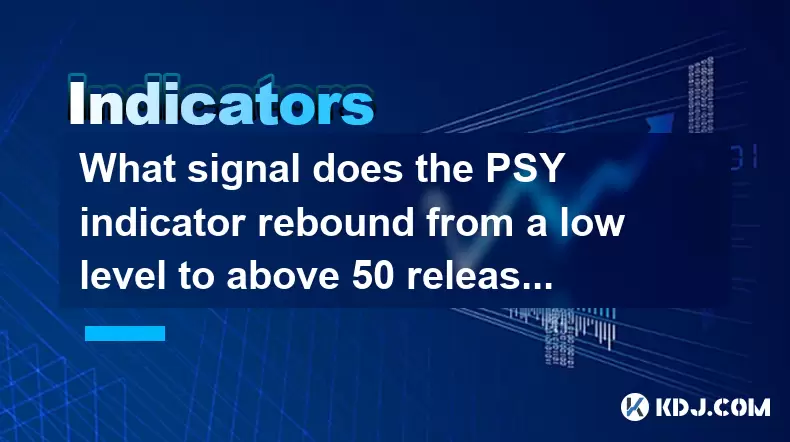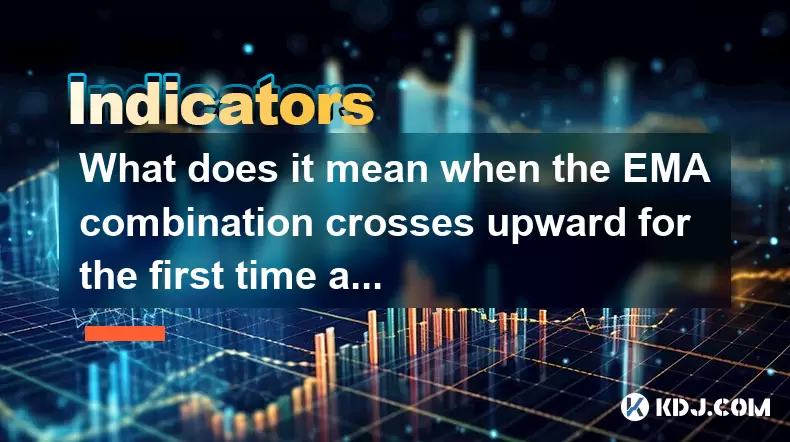-
 Bitcoin
Bitcoin $119800
1.38% -
 Ethereum
Ethereum $3873
3.25% -
 XRP
XRP $3.247
1.85% -
 Tether USDt
Tether USDt $1.001
0.02% -
 BNB
BNB $840.4
5.94% -
 Solana
Solana $190.0
2.55% -
 USDC
USDC $1.000
0.03% -
 Dogecoin
Dogecoin $0.2433
2.69% -
 TRON
TRON $0.3197
-0.05% -
 Cardano
Cardano $0.8367
1.39% -
 Sui
Sui $4.327
3.11% -
 Hyperliquid
Hyperliquid $44.00
0.31% -
 Stellar
Stellar $0.4461
1.76% -
 Chainlink
Chainlink $19.25
4.61% -
 Hedera
Hedera $0.2941
3.90% -
 Bitcoin Cash
Bitcoin Cash $598.4
6.89% -
 Avalanche
Avalanche $26.19
4.67% -
 Litecoin
Litecoin $115.1
0.50% -
 Shiba Inu
Shiba Inu $0.00001427
1.55% -
 Toncoin
Toncoin $3.379
2.01% -
 UNUS SED LEO
UNUS SED LEO $8.966
-0.16% -
 Ethena USDe
Ethena USDe $1.001
0.02% -
 Uniswap
Uniswap $11.04
4.16% -
 Polkadot
Polkadot $4.239
2.00% -
 Monero
Monero $324.6
0.36% -
 Bitget Token
Bitget Token $4.672
2.46% -
 Pepe
Pepe $0.00001294
2.69% -
 Dai
Dai $0.0000
0.01% -
 Cronos
Cronos $0.1443
2.71% -
 Aave
Aave $302.9
1.98%
What signal does the PSY indicator rebound from a low level to above 50 release?
A PSY indicator rebound from below 30 to above 50 signals shifting crypto sentiment from fear to greed, often marking a bullish reversal when confirmed by volume and price action.
Jul 28, 2025 at 12:15 pm

Understanding the PSY Indicator and Its Role in Crypto Trading
The PSY (Psychological Line) indicator is a momentum oscillator used in technical analysis to measure the sentiment of market participants. It calculates the ratio of days with rising prices to the total number of trading days over a specified period, typically 12 or 24 days. The resulting value ranges from 0 to 100. When the PSY indicator rebounds from a low level to above 50, it signals a shift in investor psychology from bearish to bullish. In the cryptocurrency market, where sentiment can shift rapidly due to news, regulatory updates, or macroeconomic factors, this signal becomes particularly significant. The core idea is that when more than half of the recent trading sessions are up days, market confidence is returning.
What Constitutes a "Low Level" for the PSY Indicator?
A "low level" for the PSY indicator is generally considered to be below 25 or 30. These thresholds suggest that the market has experienced a prolonged period of negative sentiment, with most price movements trending downward. In the crypto space, such conditions often arise after sharp corrections, security breaches, or FUD (fear, uncertainty, and doubt) events. When the PSY drops into this zone, it reflects widespread pessimism. A rebound from this area indicates that buying pressure is starting to outweigh selling pressure. Traders monitor this closely because extreme lows are often followed by reversals, especially if supported by volume increases or positive on-chain metrics.
Interpreting the Rebound Above 50
When the PSY indicator moves from a low level and crosses above 50, it suggests that more than half of the recent trading periods have closed higher. This shift is interpreted as a psychological turning point. In cryptocurrency markets, where retail participation is high, such a signal can indicate that fear is subsiding and confidence is returning. For example, if Bitcoin’s PSY(12) rises from 20 to 55 within a few days, it implies that nine out of the last 12 sessions were up days. This kind of momentum often precedes sustained upward price movement, especially if confirmed by other indicators like RSI (Relative Strength Index) or MACD (Moving Average Convergence Divergence).
How to Use the PSY Signal in Crypto Trading Strategies
To effectively act on a PSY rebound above 50, traders should follow a structured approach:
- Confirm the low level: Ensure the PSY was indeed below 30 before the rebound. A reading of 25 or lower strengthens the signal.
- Check the time frame: Apply the PSY on multiple time frames—such as 4-hour, daily, and weekly—to assess the strength of the reversal.
- Look for volume confirmation: A rising PSY accompanied by increasing trading volume adds credibility to the bullish signal.
- Cross-verify with price action: Observe whether the price is forming higher lows or breaking key resistance levels.
- Use alongside on-chain data: Metrics like exchange outflows or rising active addresses can support the narrative of renewed buying interest.
For instance, on a crypto exchange like Binance, you can add the PSY indicator to your chart by navigating to the "Indicators" menu, searching for "Psychological Line", and setting the period to 12. Watch for the line to rise from below 30 to above 50 while checking volume bars and price candles for alignment.
Common Pitfalls and False Signals
While the PSY rebound above 50 is a strong signal, it is not infallible. Cryptocurrency markets are prone to whipsaws and fakeouts, especially during low-liquidity periods or during major news events. A PSY crossing above 50 might occur during a short squeeze or a pump-and-dump scheme, leading to a temporary rise without sustained follow-through. To reduce risk:
- Avoid acting on the signal alone: Combine PSY with trend-following tools like moving averages.
- Watch for overbought conditions: If PSY rises rapidly to above 75, the market may be overextended.
- Consider market context: A PSY rebound during a bear market may only indicate a relief rally, not a trend reversal.
- Monitor external catalysts: Regulatory announcements or exchange outages can distort sentiment readings.
For example, if Ethereum’s PSY jumps above 50 but the 50-day moving average remains sloping downward, the bullish signal may lack structural support.
Practical Example: PSY Signal in a Real Crypto Scenario
Imagine Litecoin (LTC) drops 30% over two weeks due to a broader market sell-off. During this period, its PSY(12) falls to 22, indicating extreme pessimism. Over the next five days, positive news about Litecoin’s adoption in payment networks emerges. The price begins to recover, and the PSY climbs steadily. On day five, it closes at 53. This rebound from below 30 to above 50 suggests a psychological shift. Traders notice increased volume and a break above a key resistance level at $75. Those using the PSY as part of a broader strategy might enter long positions, placing stop-loss orders below the recent swing low to manage risk.
Frequently Asked Questions
What is the default period setting for the PSY indicator in most crypto trading platforms?
Most platforms, including TradingView and Binance, default the PSY indicator to a 12-period setting. This means it evaluates the last 12 candles (e.g., 12 hours or 12 days) to calculate the percentage of up days. Users can adjust this to 24 for a longer-term view or 6 for a more sensitive reading.
Can the PSY indicator be applied to altcoins with low trading volume?
Yes, but with caution. Low-volume altcoins are more susceptible to manipulation and erratic price swings, which can cause false PSY signals. It’s advisable to use additional filters like volume thresholds or market cap criteria before relying on PSY readings for such assets.
How does the PSY indicator differ from the RSI?
The PSY indicator only considers the direction of price movement (up or down days), not the magnitude. In contrast, the RSI accounts for the size of price changes. This makes PSY a pure sentiment gauge, while RSI measures both speed and change of price movements.
Is the PSY rebound signal more reliable in bull markets or bear markets?
The signal tends to be more reliable in consolidation or recovery phases rather than deep bear markets. In a strong downtrend, rebounds above 50 may be temporary. However, when the broader market structure shows signs of stabilization, such as higher lows on the BTC chart, the PSY signal gains stronger predictive value.
Disclaimer:info@kdj.com
The information provided is not trading advice. kdj.com does not assume any responsibility for any investments made based on the information provided in this article. Cryptocurrencies are highly volatile and it is highly recommended that you invest with caution after thorough research!
If you believe that the content used on this website infringes your copyright, please contact us immediately (info@kdj.com) and we will delete it promptly.
- Crypto's Next Big Meme: Is MAGACOIN Finance the New DOGE or SHIB?
- 2025-07-28 17:15:12
- Altcoins, Cryptos, and 250x Potential: Catching the Next Wave
- 2025-07-28 17:15:12
- Ethereum ETFs Steal the Show: Bitcoin Disparity and Whale Buys Fuel ETH Rally
- 2025-07-28 17:20:12
- Whale Alert: Solana Dive into Vine Coin – Risky Move or Genius Play?
- 2025-07-28 17:20:12
- ERC-20 Tokens: Still Ruling Ethereum in the 2020s?
- 2025-07-28 17:25:15
- Bitcoin, Ethereum, Lost Forever: A Billion-Dollar Digital Black Hole
- 2025-07-28 14:30:12
Related knowledge

What does it mean when the EMA combination crosses upward for the first time after sideways trading?
Jul 28,2025 at 03:43pm
Understanding the EMA and Its Role in Technical AnalysisThe Exponential Moving Average (EMA) is a widely used technical indicator in cryptocurrency tr...

What signal does the ROC send when it rises rapidly from a low level and breaks through the zero axis?
Jul 27,2025 at 10:15am
Understanding the Rate of Change (ROC) IndicatorThe Rate of Change (ROC) is a momentum-based oscillator used in technical analysis to measure the perc...

What does it mean when the price breaks through the double bottom neckline and the moving averages are arranged in a bullish pattern?
Jul 28,2025 at 10:57am
Understanding the Double Bottom PatternThe double bottom is a widely recognized reversal chart pattern in technical analysis, particularly within the ...

What signal does the DMA fast line cross the slow line above the zero axis?
Jul 28,2025 at 05:42am
Understanding the DMA Indicator and Its ComponentsThe DMA (Difference of Moving Averages) indicator is a technical analysis tool used in cryptocurrenc...

What does it mean that the rebound is blocked after the moving average is arranged in a short position for the first time?
Jul 26,2025 at 10:51am
Understanding the Short-Term Moving Average ConfigurationWhen traders refer to a 'short position arrangement' in moving averages, they are describing ...

What does it mean that the ZIGZAG low point is raised and the high point breaks through the previous peak?
Jul 28,2025 at 03:28am
Understanding the ZIGZAG Indicator in Cryptocurrency TradingThe ZIGZAG indicator is a technical analysis tool widely used in cryptocurrency trading to...

What does it mean when the EMA combination crosses upward for the first time after sideways trading?
Jul 28,2025 at 03:43pm
Understanding the EMA and Its Role in Technical AnalysisThe Exponential Moving Average (EMA) is a widely used technical indicator in cryptocurrency tr...

What signal does the ROC send when it rises rapidly from a low level and breaks through the zero axis?
Jul 27,2025 at 10:15am
Understanding the Rate of Change (ROC) IndicatorThe Rate of Change (ROC) is a momentum-based oscillator used in technical analysis to measure the perc...

What does it mean when the price breaks through the double bottom neckline and the moving averages are arranged in a bullish pattern?
Jul 28,2025 at 10:57am
Understanding the Double Bottom PatternThe double bottom is a widely recognized reversal chart pattern in technical analysis, particularly within the ...

What signal does the DMA fast line cross the slow line above the zero axis?
Jul 28,2025 at 05:42am
Understanding the DMA Indicator and Its ComponentsThe DMA (Difference of Moving Averages) indicator is a technical analysis tool used in cryptocurrenc...

What does it mean that the rebound is blocked after the moving average is arranged in a short position for the first time?
Jul 26,2025 at 10:51am
Understanding the Short-Term Moving Average ConfigurationWhen traders refer to a 'short position arrangement' in moving averages, they are describing ...

What does it mean that the ZIGZAG low point is raised and the high point breaks through the previous peak?
Jul 28,2025 at 03:28am
Understanding the ZIGZAG Indicator in Cryptocurrency TradingThe ZIGZAG indicator is a technical analysis tool widely used in cryptocurrency trading to...
See all articles

























































































